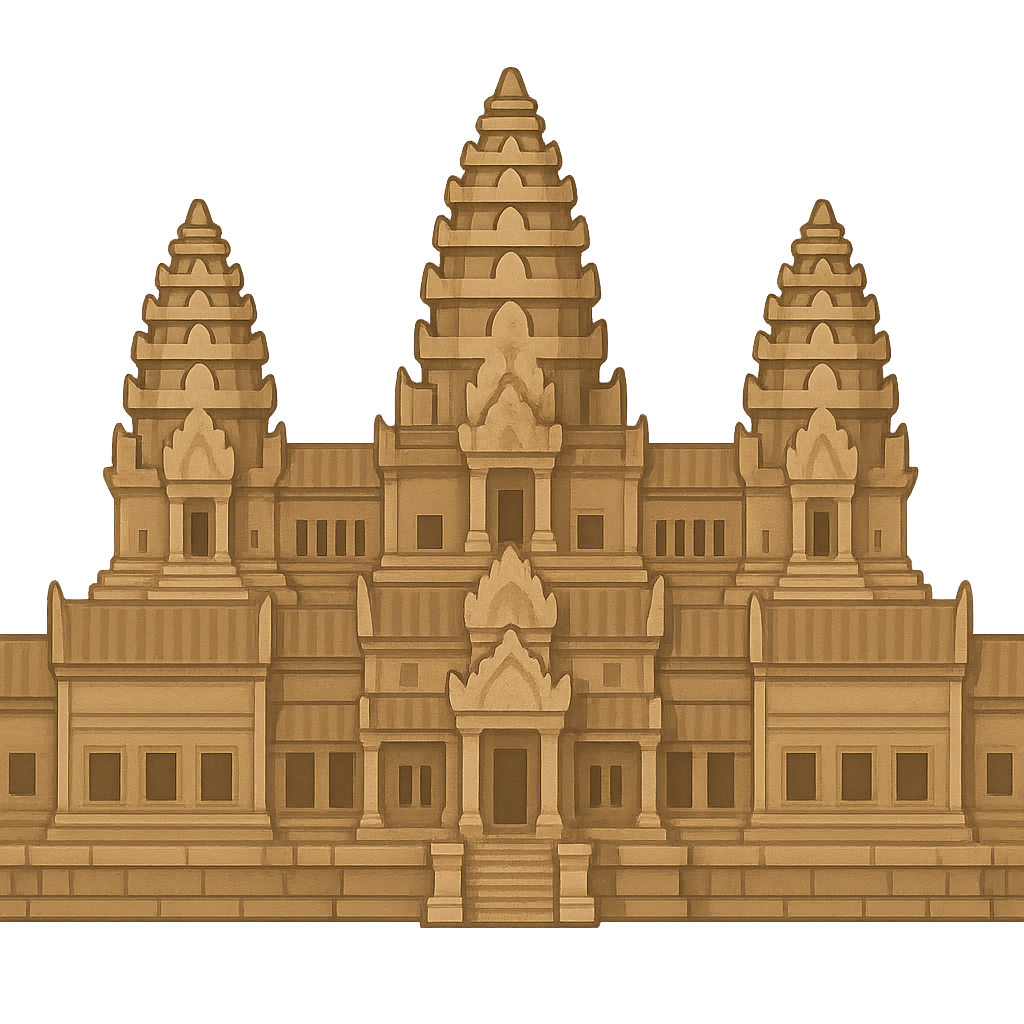The Stone Flower of Cambodia
I am surrounded by a wide, shimmering moat, like a mirror reflecting the sky. My five towers rise up like giant lotus buds about to bloom, reaching for the clouds. For centuries, I have watched the sun rise, painting my grey stone walls with gold and pink light. The jungle is my neighbor; its chirps, buzzes, and rustles are my daily music. Visitors walk across a long stone causeway to reach me, feeling small beside my enormous gates. They don't know my name yet, but they can feel my ancient magic. I am a city, a temple, and a story carved in rock. I am Angkor Wat.
I was born from the vision of a great king named Suryavarman II, who ruled the powerful Khmer Empire almost 900 years ago. He became king around the year 1113 and had a very important dream. He wanted to build a home on Earth for a god he deeply respected, Vishnu, the protector of the universe. But I was also meant to be the king’s final resting place, a magnificent tomb and a gateway to the heavens. It took tens of thousands of people and herds of strong elephants nearly 40 years to build me. They floated giant blocks of sandstone down a river and then pulled them into place with ropes and sweat. Artists then spent years carving my walls with incredible stories of gods, heroes, and battles from Hindu myths. If you trace your fingers along my long galleries, you can feel the dancing figures, the marching armies, and the powerful gods they brought to life in stone. Every carving tells a piece of a story, making me a giant stone book for everyone to read.
After the time of King Suryavarman II, new kings built new cities, and my purpose began to change. People started to worship Buddha within my walls, and I transformed into a peaceful Buddhist temple. For a very long time, the world outside forgot about me. The jungle crept closer, and giant tree roots wrapped around my galleries like gentle, sleeping snakes. Moss grew on my stones like a soft green blanket. It was not a sad time; it was a long, quiet rest. I listened to the monsoon rains and the wind whispering through my corridors, holding the stories of my builders safe within my stone heart. I was sleeping, but I was not gone.
Centuries later, around the year 1860, explorers from far away journeyed deep into the jungle. One of them, a Frenchman named Henri Mouhot, was stunned when he found me rising out of the trees. He wrote about my beauty and shared my story with the world. Soon, people came from everywhere to see me for themselves. Today, I am no longer hidden. I am a proud symbol of the great nation of Cambodia, and my picture is even on their flag. Monks in bright orange robes still walk my halls, and visitors come from all over the world to watch the sunrise, just as I have for nearly a thousand years. I am a reminder that even things that are lost can be found again, and that great dreams, even those carved in stone, can last forever and inspire everyone.
Reading Comprehension Questions
Click to see answer
